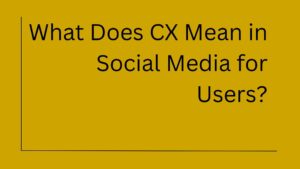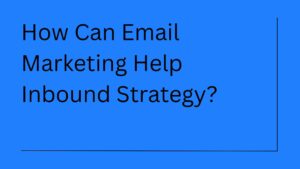You’re scrolling through social media and seeing your competitors get thousands of likes, shares, and comments while your posts barely get noticed. Maybe you’re posting consistently but not seeing any real business results. Perhaps you’re wondering if social media marketing actually works or if you’re just wasting time.
Here’s the reality: most businesses are doing social media completely wrong.
They’re posting random content without any clear purpose, chasing vanity metrics that don’t matter, and wondering why their social media efforts aren’t driving actual sales or meaningful growth.
But some businesses are absolutely crushing it on social media. They’re building engaged communities, generating real leads, and turning social media followers into paying customers consistently.
The difference isn’t luck or having a bigger budget. It’s having a result-driven strategy that connects every post, every campaign, and every interaction to specific business outcomes.
Creating an effective social media strategy isn’t about being on every platform or posting multiple times per day. It’s about understanding what you want to achieve, who you’re trying to reach, and how to measure whether your efforts are actually working.
Let’s break down how to build a social media strategy that delivers real results instead of just pretty engagement numbers.
7 Easy Steps to Create a Social Media Marketing Strategy
Start With Clear Business Goals (Not Social Media Goals)
Most businesses approach social media backwards. They decide they need to “be on social media” and then figure out what to post without connecting their efforts to actual business objectives.
This approach leads to a lot of activity but very little impact.
Your social media strategy should start with your business goals, then work backward to determine how social media can support those objectives.
Are you trying to increase sales for a specific product line? Generate more leads for your service business? Build brand awareness in a new market? Improve customer retention? Each of these business goals requires a different social media approach.
Let’s say your main business goal is generating more leads for your consulting practice. Your social media strategy might focus on sharing valuable insights that demonstrate your expertise, engaging in industry discussions where potential clients spend time, and creating content that encourages people to download your lead magnets or schedule consultations.
If your goal is to market a digital product, your strategy might emphasize product demonstrations, customer testimonials, behind-the-scenes content that builds trust, and promotional campaigns that drive traffic to your online store.
The key is connecting every social media activity to a specific business outcome you can measure.
Here are some business-focused goals that actually matter:
Increase Revenue: Track how much money your social media efforts generate through direct sales, lead generation, or customer retention.
Build Brand Awareness: Measure reach, mentions, and brand recognition surveys rather than just follower counts.
Generate Quality Leads: Focus on capturing contact information from people who are genuinely interested in your products or services.
Improve Customer Retention: Use social media to provide better customer service, build community, and keep existing customers engaged.
Expand Market Reach: Target new geographic markets, demographic segments, or customer personas through social media.
Don’t try to accomplish all of these goals simultaneously. Pick one or two primary objectives and build your entire strategy around achieving them effectively.
Research Your Audience Like Your Business Depends on It
Too many businesses make dangerous assumptions about who their audience is and what they want to see on social media.
You might think your target customers are active on Facebook, but they’re actually spending most of their social media time on LinkedIn or Instagram. You might assume they want educational content when they’re actually looking for entertainment or inspiration.
These assumptions can waste months of effort and thousands of dollars on content and advertising that reaches the wrong people or fails to resonate with your actual audience.
Start by researching where your real customers actually spend their time online. Look at your website analytics to see which social platforms drive the most traffic and conversions. Survey your existing customers about their social media habits and preferences.
Different platforms attract very different audiences, and understanding these differences is crucial for your strategy.
Instagram skews younger and more visual, making it perfect for lifestyle brands, fashion, food, and businesses that can showcase their products through compelling imagery.
LinkedIn attracts professionals and decision-makers, making it ideal for B2B services, career-related content, and industry thought leadership.
Facebook has an older, more diverse audience and works well for community building, local businesses, and content that encourages discussion and sharing.
TikTok reaches primarily Gen Z and younger millennials who prefer authentic, entertaining video content over polished advertisements.
Twitter attracts people who want real-time information, news, and conversations about current events and trending topics.
But platform demographics only tell part of the story. You need to understand your specific audience within each platform.
Use built-in analytics tools to learn about your current followers’ demographics, interests, and engagement patterns. Look at when they’re most active, what types of content generate the most engagement, and which posts drive the most website traffic or conversions.
Don’t spread your efforts across every platform hoping to reach everyone. Focus on the platforms where your ideal customers are already active and engaged.
Choose Metrics That Actually Matter for Your Business
Here’s where most businesses go completely wrong: they focus on vanity metrics that make them feel good but don’t connect to business results.
Follower counts, likes, and total impressions might boost your ego, but they don’t pay your bills or grow your business unless they lead to meaningful actions.
Instead, focus on metrics that directly relate to your business goals.
Click-through rates show how effectively your content drives traffic to your website, landing pages, or online store.
Conversion rates measure how many social media visitors actually take desired actions like making purchases, signing up for newsletters, or requesting quotes.
Lead generation tracks how many qualified prospects you’re attracting through social media efforts.
Customer acquisition cost helps you understand how much you’re spending to acquire each new customer through social channels.
Revenue attribution shows how much money your social media efforts are actually generating for your business.
Engagement quality goes beyond total likes to measure meaningful interactions like shares, comments, and direct messages that indicate genuine interest.
Brand mention sentiment tracks whether people are saying positive, negative, or neutral things about your business on social media.
Set up proper tracking systems that allow you to follow customer journeys from social media interactions to final purchases. Use UTM parameters on your social media links, implement conversion tracking pixels, and integrate your social media analytics with your website and sales data.
Without accurate measurement, you’re essentially flying blind and making decisions based on incomplete information.
Create Content That Serves Your Overall Marketing Strategy
Now comes the fun part: creating content that actually supports your business goals instead of just filling up your posting schedule.
Your content strategy should be directly tied to the goals and audience insights you’ve already established. Every piece of content should serve a specific purpose in moving people closer to taking actions that benefit your business.
If your goal is lead generation, create content that demonstrates your expertise and encourages people to download resources, attend webinars, or schedule consultations.
If your goal is to increase sales, focus on product demonstrations, customer testimonials, behind-the-scenes content that builds trust, and promotional campaigns that highlight specific benefits.
If your goal is brand awareness, share content that showcases your company culture, values, and unique personality in ways that make people remember and recognize your business.
Develop consistent content themes that help people understand what to expect from your brand. Maybe you share industry insights on Mondays, customer success stories on Wednesdays, and behind-the-scenes content on Fridays.
Use storytelling to make your content more engaging and memorable. Instead of just listing product features, tell stories about how your products solve real problems for real customers.
Mix educational and promotional content strategically. The exact ratio depends on your industry and audience, but most successful brands follow something like a 70/30 or 80/20 split, favoring valuable, non-promotional content.
Leverage user-generated content whenever possible. Customer photos, testimonials, and reviews provide social proof while reducing the burden of creating everything yourself.
Experiment with different content formats to see what resonates best with your audience. This might include photos, videos, stories, live streams, polls, or carousel posts.
Create content series that keep people coming back for more. This could be weekly tips, monthly case studies, or ongoing tutorials that build expertise over time.
Don’t just copy what your competitors are doing. Your content should reflect your unique brand personality and value proposition in ways that differentiate you from everyone else in your industry.
Master the Art of Social Media Timing
When you post content can be just as important as what you post, but most businesses completely ignore timing strategy.
Your audience isn’t online 24/7, and posting at random times means your content might get buried before your ideal customers ever see it.
Use your analytics data to identify when your specific audience is most active and engaged. These patterns might be different from general “best times to post” advice you see online because your audience has unique characteristics and behaviors.
Look for patterns in your highest-performing posts. Do they tend to get posted at certain times of day or days of the week? Are there seasonal trends that affect engagement with your content?
Consider your audience’s lifestyle and schedule when planning content timing. If you’re targeting working professionals, they might be most active during lunch hours and evening commutes. If you’re targeting parents, early morning or late evening might work better.
Time zone considerations become crucial if your audience spans multiple geographic regions. You might need to post the same content multiple times to reach audiences in different time zones, or use scheduling tools that optimize posting times automatically.
But don’t get so obsessed with timing that you sacrifice content quality. A great post at a suboptimal time will usually outperform mediocre content posted at the “perfect” moment.
Engage Authentically (Not Just to Boost Numbers)
Social media is supposed to be social, but many businesses treat it like a one-way broadcasting channel.
Real engagement means having genuine conversations with your audience, responding to comments and questions thoughtfully, and participating in discussions that matter to your community.
When someone comments on your posts, respond in ways that continue the conversation rather than just thanking them for engaging. Ask follow-up questions, share additional insights, or invite them to share their own experiences.
Monitor mentions of your brand, products, or industry keywords so you can join conversations happening outside your own posts. This helps you discover new potential customers and demonstrate your expertise in relevant discussions.
Don’t automate everything. While scheduling tools are essential for consistency, authentic engagement requires human attention and genuine responses to what’s happening in real-time.
Engage with other accounts in your industry, including competitors, partners, and thought leaders. This helps expand your network and puts your brand in front of new audiences who might be interested in what you offer.
But remember that engagement should serve your business goals, not just create activity for its own sake. Focus on interactions that have the potential to build relationships, generate leads, or support your brand reputation.
Test, Measure, and Optimize Continuously
The most successful social media strategies are constantly evolving based on data and results.
Set up regular reviews of your social media performance to identify what’s working, what’s not working, and what opportunities you’re missing.
Test different types of content, posting times, captions, hashtags, and calls to action to see what generates better results for your specific audience and goals.
A/B test your social media ads by trying different images, headlines, target audiences, and budget allocations to optimize your return on investment.
Track your competitors’ social media activities to identify trends, successful content formats, and potential gaps in the market that you could fill.
Use social listening tools to monitor conversations about your brand, industry, and competitors so you can identify opportunities and address problems before they escalate.
Don’t make major strategy changes based on single posts or short-term fluctuations. Look for patterns over weeks and months to make informed decisions about what adjustments will actually improve your results.
Document what you learn so you can build on successful experiments and avoid repeating mistakes.
Integration: Making Social Media Strategy Work With Every Marketing Effort
Your social media strategy shouldn’t exist in isolation from your other marketing efforts.
The most effective social media strategies integrate seamlessly with email marketing, content marketing, search engine optimization, and offline marketing activities.
Use social media to drive traffic to your email newsletter signup forms, then use email to drive engagement back to your social media content.
Repurpose your blog content, podcast episodes, and other marketing materials into social media posts that extend their reach and impact.
Cross-promote your social media presence in your email signatures, on your website, and in your offline marketing materials.
Use insights from your social media audience research to inform your other marketing strategies and vice versa.
Create campaigns that span multiple channels, using social media to amplify messages that also appear in your email marketing, content marketing, and advertising efforts.
Conclusion: Building Your Best Social Media Marketing Strategy
Creating a social media strategy that actually drives business results requires more strategic thinking and less random posting.
Start with clear business objectives, research your audience thoroughly, choose metrics that matter, and create content that serves your goals rather than just filling up your posting calendar.
Remember that social media success doesn’t happen overnight. It requires consistent effort, continuous optimization, and patience as you build relationships and establish your brand presence.
But when done correctly, social media becomes one of your most powerful tools for reaching new customers, building brand loyalty, and driving sustainable business growth.
The businesses that succeed on social media are the ones that treat it as a serious marketing channel with clear objectives, measurable outcomes, and strategic importance rather than just another place to post pretty pictures.
Your social media strategy should be as thoughtful and results-focused as any other aspect of your marketing. When it is, the results will speak for themselves.






2 thoughts on “How to Create a Result-Driven Social Media Marketing Strategy?”
Hello, I think that I saw you visited my website, so I came to return the favour. I’m trying to find things to improve my website. I suppose it’s ok to use some of your ideas.
Since I read the whole blog, I would like to know how long it would take one to prepare a complete strategy to grow a social media handle. Between you, you make blogging look easy. The overall look of your site is great, as well as the content.